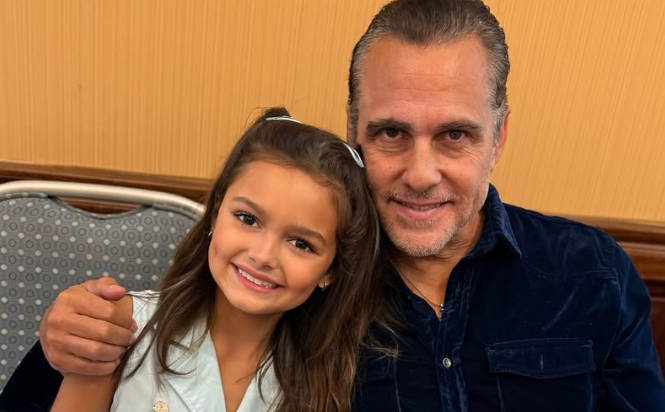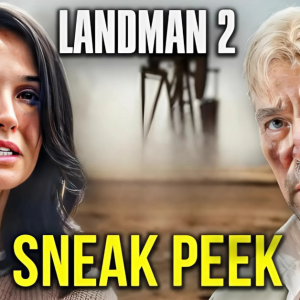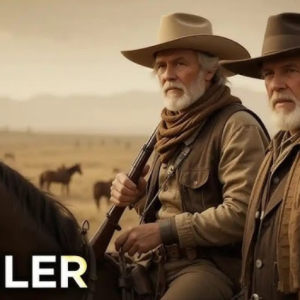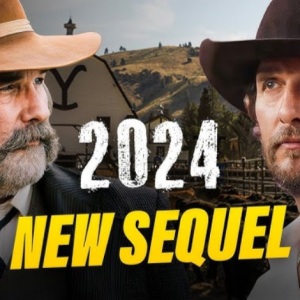The vast, unforgiving plains of Montana have consistently tested the mettle of the Dutton family across generations, forcing them to confront unimaginable hardship, loss, and the relentless march of time. As the dust settles on the dramatic conclusion of 1923, fans of Taylor Sheridan’s expansive Yellowstone universe are left contemplating a future fraught with uncertainty, yet brimming with the promise of continued resilience. Paramount+ has greenlit the next explosive chapter, 1944, setting the stage for a pivotal era in the Dutton saga. This new prequel will bridge a critical gap in the family’s history, propelling the narrative into a world forever reshaped by global conflict and societal upheaval. The central questions looming over 1944 are not merely about who survives, but who will emerge to carry the daunting weight of the Dutton legacy into a post-war landscape.
The preceding chapter, 1923, concluded with a heartbreaking toll, underscoring the brutal realities of life on the frontier. The tragic demises of Jack Dutton and Alexandra, characters who had endeared themselves to viewers, served as a stark reminder of the ever-present danger that shadows the Yellowstone ranch. Jack, the promising young rancher and devoted husband, met a brutal and senseless end at the hands of a cowardly bullet, his youthful dreams of building a life with Alexandra tragically cut short. Alexandra, whose spirit and resilience had made her a fan favorite, succumbed to the devastating complications of frostbite, leaving viewers gutted and the Dutton family reeling from yet another profound loss. Their nascent love story, though cruelly brief, highlights the fragility of life and the immense sacrifices demanded by the land. Their absence in 1944 signals a definitive shift, leaving behind not just grief but a void that a new generation must endeavor to fill, raising pressing questions about the future of the legacy they were poised to inherit.
Meanwhile, the foundational figures of 1923, Jacob and Cara Dutton, miraculously weathered the immediate storms, yet their presence in 1944 remains highly uncertain. Given their advanced age and the relentless physical and emotional toll exacted by life on the Montana frontier, the prospect of seeing them actively involved in the new series grows increasingly slim. Throughout their tenure, Jacob and Cara epitomized the grit, unwavering leadership, and profound sacrifices necessary to keep the family and the ranch intact during its darkest hours. Their leadership was not merely about managing the land; it was about embodying the spirit of the Dutton name—a spirit of unyielding determination against all odds. Should they not appear in 1944, their absence will symbolize a significant generational transition, marking the true beginning of a new Dutton era. Their enduring legacy will undoubtedly loom large over the ranch’s future, but the narrative pivot suggests that the time has come for a younger generation to step up and assume the mantle of stewardship.

Among the surviving characters from 1923, Spencer Dutton stands out as the most probable central figure for 1944. His arduous journey, spanning the battlefields of World War I to the treacherous African plains, was a crucible that forged him into a hardened, albeit traumatized, survivor. As indicated by Elsa Dutton’s prophetic voiceover, Spencer is destined to live for another 45 years beyond the events of 1923, firmly placing him as a likely protagonist in the next prequel. By the time 1944 unfolds, Spencer would be in his late 40s, having matured into a man grappling with the full weight of adulthood, fatherhood (presumably to his son, John), and the impending, if not immediate, leadership of the Yellowstone ranch. With his uncle Jacob and aunt Cara potentially stepping aside, Spencer is the logical, albeit reluctant, heir to the Dutton legacy. The series will undoubtedly explore whether he can rise to this momentous occasion, shedding the lingering shadows of his past traumas to become the unwavering leader his family and the land desperately need. Brandon Sklenar, who powerfully portrays Spencer, has expressed keen interest in reprising his role, noting the importance of his character teaching his son, John, the essential skills of ranch life—a mentorship that promises to be a poignant cornerstone of 1944.
Equally compelling is the arc of Teonna Rainwater, whose narrative in 1923 was nothing short of transformative and profoundly resonant. Her journey, from enduring horrific abuse at the hands of malevolent nuns and Father Renaud to her courageous escape and reclamation of freedom, emerged as one of the show’s most potent storylines, reflecting the systemic injustices faced by Indigenous communities. The finale sees Teonna walk free, no longer hunted by the law, with her entire life stretched out before her. Given her surname, a connection to Yellowstone’s contemporary Chief Thomas Rainwater has long been speculated by fans. If this lineage proves true, 1944 could serve as a pivotal turning point in the Rainwater ancestry, chronicling the origins of their enduring fight for sovereignty and land rights. Aminah Nieves, who embodies Teonna with fierce determination, has enthusiastically voiced her desire to return, stating, “Age me up, do what you need to do. I’m here for it.” At just 27, Nieves possesses the range to convincingly portray an older, wiser, and potentially more influential Teonna—perhaps even a burgeoning leader within her community, navigating the complex social and political landscape of post-war America as a resilient Indigenous woman. Her story will be crucial in illustrating the parallel struggles for survival and self-determination beyond the Dutton family.
Another key figure, Elizabeth Dutton, faced unimaginable personal loss in 1923, departing the series as a young, pregnant widow. Her dreams of a idyllic life on the ranch were shattered by the harsh realities of the frontier. However, her story is far from over. Actress Michelle Randolph confirmed Elizabeth’s pregnancy as she bids farewell to Cara, meaning her unborn child represents a crucial, tangible link in the Dutton family tree. Elizabeth’s journey in 1944 could follow her raising her child in a world far removed from the rugged expanse of the Yellowstone ranch, perhaps in the perceived comfort of urban Boston. This narrative thread presents a compelling internal conflict: will she remain detached from the ranch, or will the indelible pull of her child’s Dutton heritage eventually draw them back to Montana? The potential narrative avenues are limitless, and Randolph has unequivocally stated her commitment: “I’m in. If it’s written, I’m in.” Her story could explore the evolving role of women in the 1940s, as well as the generational struggle between modern urban life and the ancestral call of the land.

With so many core characters either lost or aged out by the end of 1923, 1944 is poised to introduce and empower a new generation of Duttons. Spencer and Elizabeth’s children, as well as potential new characters, could become central figures, bridging the raw, untamed values of the old world with the rapidly shifting realities of mid-20th-century America. The backdrop of World War II, its profound economic upheaval, and the evolving social roles of women and Indigenous communities will undoubtedly shape the conflicts and character arcs within this new saga. Taylor Sheridan’s storytelling thrives on exploring generational conflict, moral ambiguity, and the relentless drive for survival at all costs. With 1944, he has a monumental opportunity to delve into how the Duttons adapt—or tragically fail to adapt—to an era defined by global war, profound social change, and the persistent challenges of maintaining their vast dominion.
1944 is more than just another prequel; it is a critical, perhaps even foundational, chapter in the ongoing evolution of the Dutton dynasty. The fates of who survives, who thrives, and who ultimately falls may surprise even the most ardent Yellowstone devotees. One undeniable truth will permeate the narrative: the choices made and the sacrifices endured in 1923 will echo far into the future, directly shaping the world of 1944 and, by extension, the contemporary Yellowstone series. As Sheridan meticulously crafts this sweeping saga, fans will eagerly await every casting announcement, every subtle plot tease, and every flashback for clues that illuminate the Duttons’ arduous path. Will 1944 successfully deliver on the promise of continuing the Dutton legacy with the same visceral intensity and emotional depth that has defined its predecessors, or will it introduce new forces destined to challenge the very core of their existence? On the sprawling, ever-demanding plains of Montana, one thing remains certain: the quiet moments are fleeting, and the next storm is always just over the horizon.





